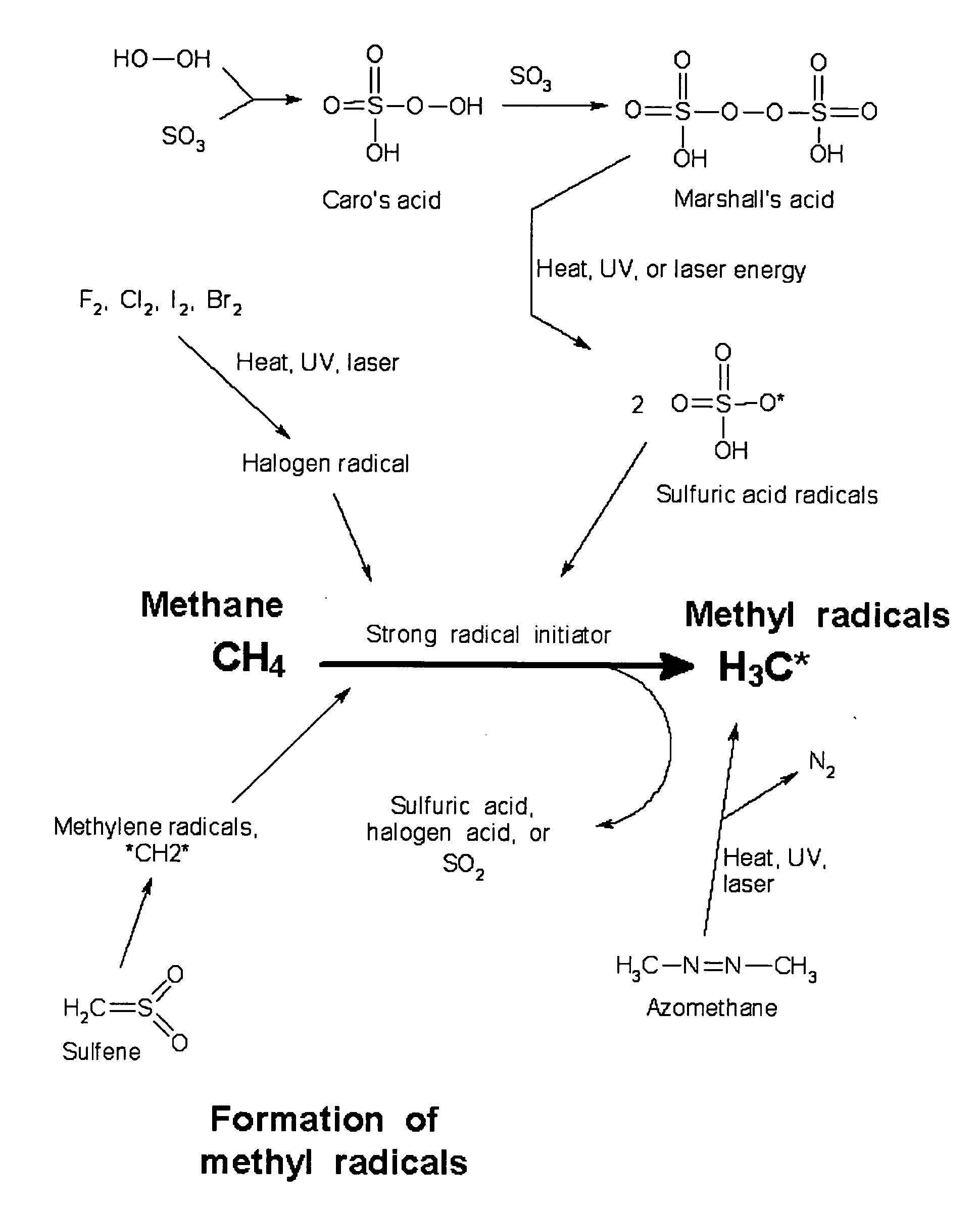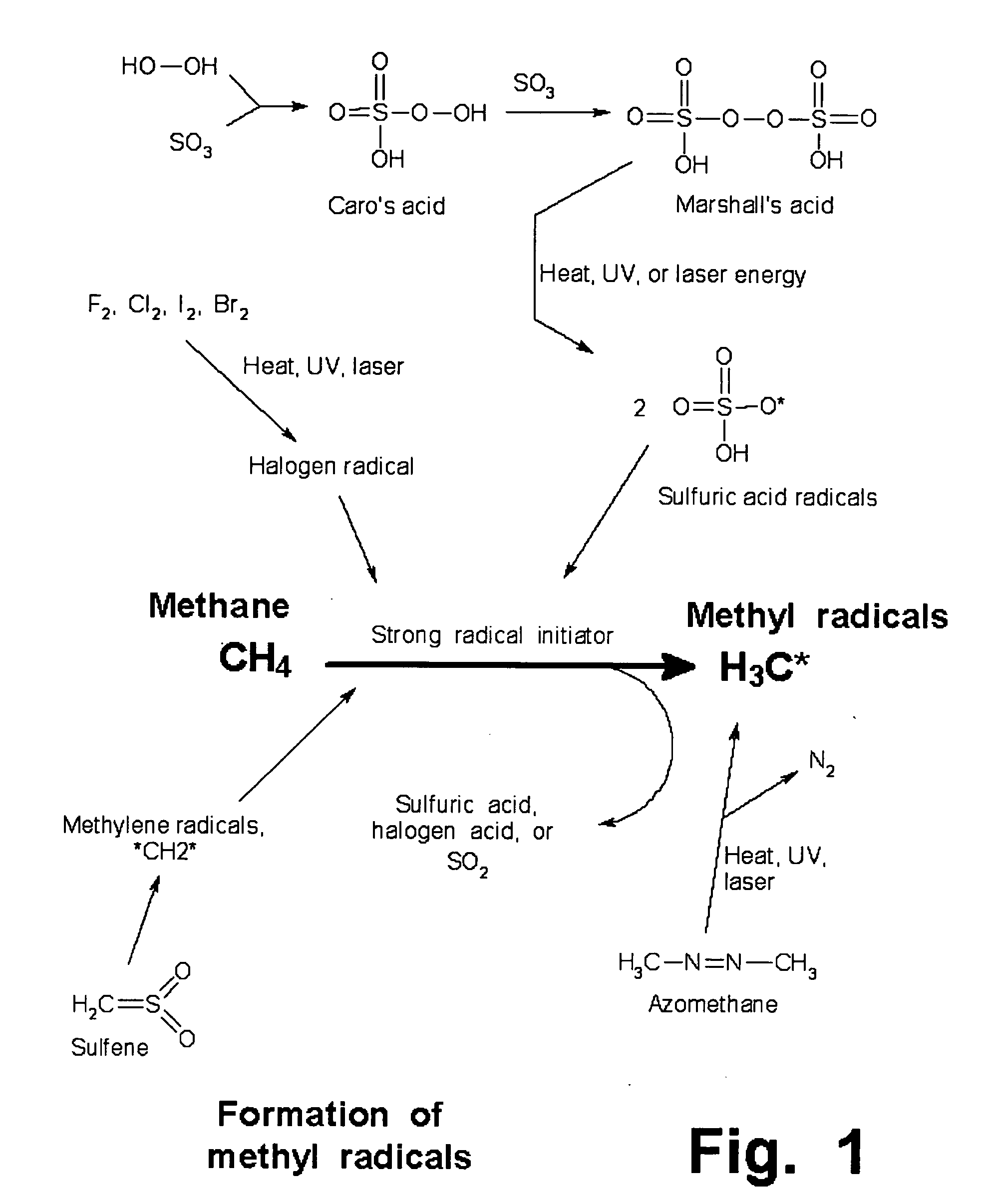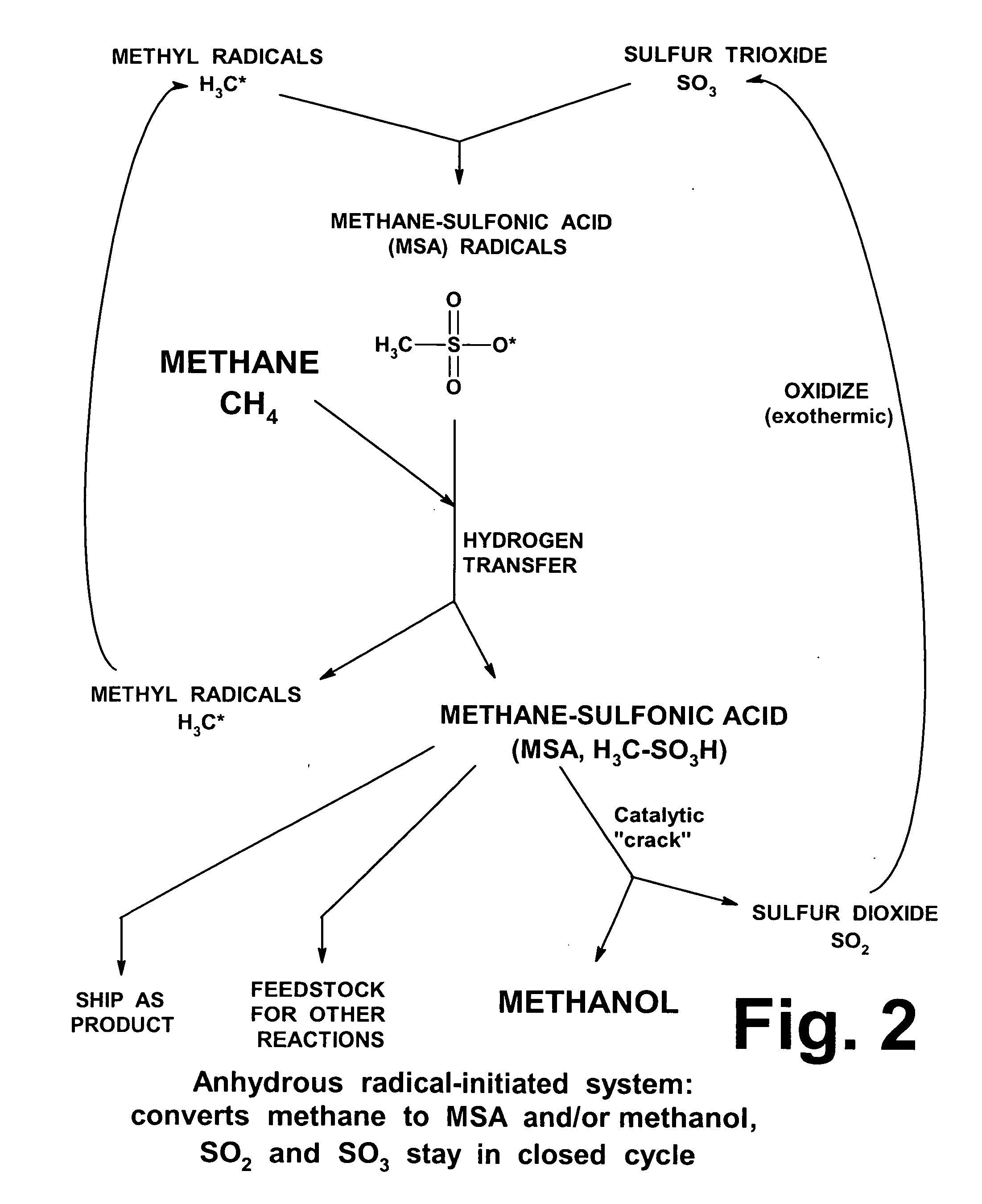Manufacture of higher hydrocarbons from methane, via methanesulfonic acid, sulfene, and other pathways
a technology of methane and higher hydrocarbons, which is applied in the field of hydrocarbon chemistry, organic chemistry, and methane gas processing, can solve the problems of large volumes of methane wasted every day, small quantities and low yield, and none of those efforts ever created yields sufficient to support commercial use at oil-producing sites, etc., and achieves the effect of convenient handling
- Summary
- Abstract
- Description
- Claims
- Application Information
AI Technical Summary
Benefits of technology
Problems solved by technology
Method used
Image
Examples
example 1
Making and Cracking MSA
[0282]Methods and reagents used to make Marshall's acid and MSA in laboratory conditions, using a batch reactors, have already been described in PCT applications PCT / US03 / 035396 (published in May 2004 as WO 2004 / 041399) and PCT / US04 / 019977, both filed by the same Applicant herein. Therefore, those descriptions will not be repeated herein.
[0283]To crack MSA in a manner that releases methanol and SO2, nitrogen gas (N2) at a flow rate of 6 to 8 mL / second was passed through a gas bubbler containing 10.0-15.0 g of MSA at 120-140° C. The outlet of the bubbler was connected to a quartz tube with an inner diameter of 2 cm and a length of 20 cm, which (except for short inlet and outlet segments) passed through a furnace In various different tests, the tube was either empty, or a 10 cm length of the tube was loaded with 4 to 8 mesh zeolite beads (Davison Chemicals, code number 54208080237). The outlet of the tube was connected to two bubblers, each containing 5.0 g of D...
example 2
Synthesis of Ethylene and Liquid Alkanes on Hydroxylated Silicate Monolith
[0285]The Applicant purchased (from Vesuvius Hi-Tech Ceramics) the same type of “low surface area reticulated silica monolith” described in Barteau 1996, and processed an MSA preparation (purchased from Aldrich Chemical) on it, using reflux temperatures for several hours. Analysis of the gases that emerged from the refluxing liquid, using 1H-NMR, 3C-NMR, and gas chromatography, indicated that the gases contained ethylene, and liquid alkanes.
[0286]The presence of those compounds in those gases indicated that: (i) when MSA is processed on a suitable activated surface, it can pass through intermediates that will create olefins (such as ethylene) and higher alkanes; (ii) the postulated mechanisms and molecular rearrangements described herein have received experimental support; and, (iii) methods for creating olefins and alkanes from MSA can indeed be provided, by one or more pathways that apparently use MSA anhydr...
example 3
Decomposition of MSA Outer Anhydride
[0287]The Applicant purchased the MSA “outer anhydride” compound, in crystalline form, from Aldrich Chemical. In a reaction beaker, it was heated until the crystals melted and then began to form a clear liquid over a black solid. The liquid and the solid were analyzed, using 1H-NMR, 13C-NMR, and gas chromatography. The results indicated that the clear liquid consisted mainly of MSA and cycloalkanes. The black solid was found to contain cyclic hydrocarbons, naphthenics, and a relatively high quantity of aromatic structures. Some of the aromatic rings were bridged by sulfonate or methylene bridges, and some of the aromatic rings had cyclopropane rings attached to them.
[0288]Those results provide experimental support for various postulated mechanisms and molecular rearrangements described herein, and confirm that methods for creating olefins, alkanes (including cycloalkanes), and aromatics from MSA can be provided, by one or more pathways that appare...
PUM
| Property | Measurement | Unit |
|---|---|---|
| Time | aaaaa | aaaaa |
| Efficiency | aaaaa | aaaaa |
| Purity | aaaaa | aaaaa |
Abstract
Description
Claims
Application Information
 Login to View More
Login to View More - R&D
- Intellectual Property
- Life Sciences
- Materials
- Tech Scout
- Unparalleled Data Quality
- Higher Quality Content
- 60% Fewer Hallucinations
Browse by: Latest US Patents, China's latest patents, Technical Efficacy Thesaurus, Application Domain, Technology Topic, Popular Technical Reports.
© 2025 PatSnap. All rights reserved.Legal|Privacy policy|Modern Slavery Act Transparency Statement|Sitemap|About US| Contact US: help@patsnap.com



